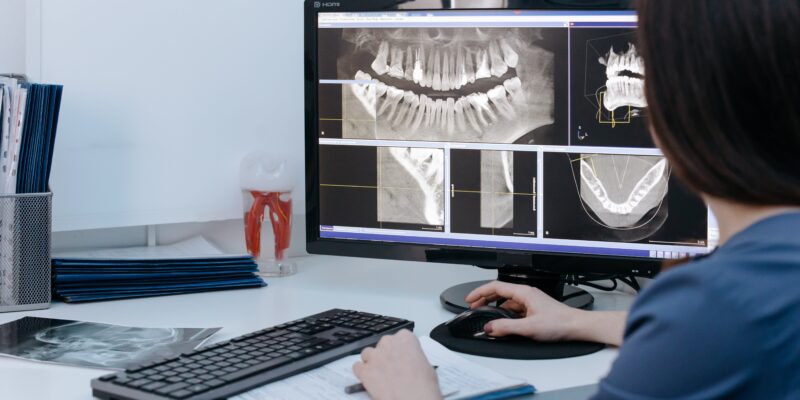The American Dental Association (ADA) has released updated recommendations aimed at enhancing radiography safety in dentistry. These guidelines advise against the use of lead abdominal aprons or thyroid collars during dental X-rays and emphasize the importance of judicious use of imaging for optimal patient care.
Published in the Journal of the American Dental Association, these recommendations mark a significant shift in dental radiography practices. Supported by medical physicists from the U.S. Food and Drug Administration (FDA), the ADA’s Council on Scientific Affairs developed these guidelines, the first of their kind since 2012. Notably, they are in alignment with recent recommendations from the American Academy of Oral and Maxillofacial Radiology.
After reviewing published studies on radiography, the expert panel determined lead aprons and thyroid collars are not necessary to shield patients from radiation exposure. These recommendations apply to all patients, regardless of age or health status (like pregnancy). Evidence indicates that modern digital X-ray equipment and restricting the beam size only to the area that needs to be imaged better protect patients against radiation exposure to other parts of their body. Lead aprons and thyroid collars can also block the primary X-ray beam, preventing dentists from capturing the needed image.
Dr. Purnima Kumar, D.D.S., Ph.D., Chair of the ADA Council on Scientific Affairs, emphasized the importance of moderation in ordering radiographs to minimize both patient and dental professional exposure to ionizing radiation. The recommendations advocate for the optimization of diagnostic information through the prudent use of X-rays and the utilization of images acquired during previous dental examinations.
In addition to discontinuing the use of lead aprons and thyroid collars, the ADA recommends:
- Transitioning from conventional X-ray film to digital imaging
- Employing rectangular collimation to restrict the X-ray beam to the area of interest
- Ensuring proper patient positioning for optimal imaging
- Reserving cone-beam computed tomography (CBCT) for cases where lower-exposure options are insufficient for diagnostic purposes
- Adhering to all relevant federal, state, and local regulations on radiation safety
Dr. Kumar encourages dental professionals to familiarize themselves with these updated recommendations, comply with radiation protection regulations, and openly communicate with patients regarding any questions or concerns related to dental imaging.
These guidelines represent a significant step forward in enhancing radiation protection for both patients and dental professionals while ensuring the delivery of high-quality dental care. By adopting these best practices, dentists can continue to prioritize patient safety and well-being in their practices.




















Comments